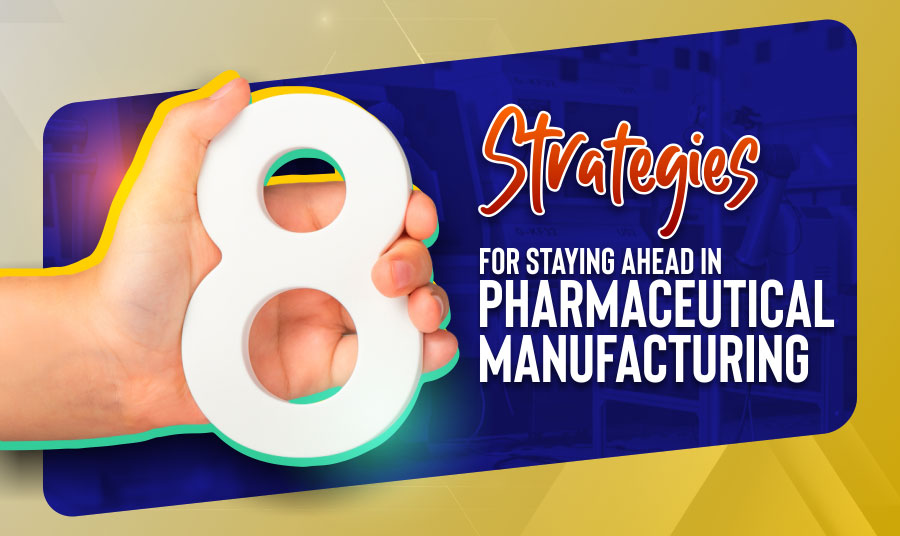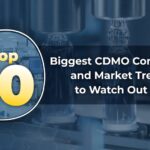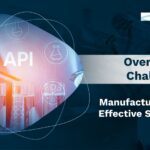Pharmaceutical manufacturing faces numerous challenges that require careful planning and effective strategies. These eight strategies will help you address common issues and maintain operational excellence.
1. Integration of Operations Management Decisions for Sustainability
Sustainability is a growing concern in the pharmaceutical sector when it comes to manufacturing. Embracing sustainability objectives in your business is not only beneficial environmentally, but it could also serve as a way to enhance your company’s image and save you money on cost-cutting efforts as well.
To accomplish this, incorporate sustainability into your business. This can involve minimizing wastage, efficiently utilizing resources, and managing raw materials. Periodically assess and reconsider your sustainability objectives to ensure that they are still realistic and appropriate. Sustainable manufacturing will enhance business practices while providing significant service to the environment.
Management of Sustainable Practices in Operations
Sustainability means minimizing waste, decreasing energy usage, and procuring resources most appropriately. Strive to review your sustainability goals often to consider potential threats and unresolved issues.
2. Create Business-Driven Aspirational Goals
It is essential to set goals and objectives that are derived from the business and are, therefore, desirable and achievable. Goals should blend your business’s vision with the strategies and actions it is implementing. These goals should be challenging and realistic, thus challenging your manufacturing processes to move toward the next level of advancement.
Ensure that various stakeholders are involved in setting goals to enhance the organization’s cohesiveness. These goals should be used as indicators of the organization’s performance and for decision-making. Strategic objectives can inspire your employees, foster creativity, and align your business with its competitors.
Strategically Achieving Goals
Strategic goals and targets should be challenging and achievable. They should enable an organization to experience consistent progressive improvement. Engage the stakeholders in developing these goals to ensure that they are in harmony with the business’s overall strategies and foster innovation.
3. Turn to Analytics and Scenario Planning
Using analytics and developing contingencies is vital in a pharmaceutical manufacturing business’s decision-making process. Different data sets make it easier to predict the outcome and make managerial decisions, which helps improve the organization’s functioning.
Scenario planning is a tool for more effective decision-making and decreased risk levels. Adopting these tools can generate improvements in organizational processes, cost control, and competitiveness to market shifts.
Data-Driven Decision-Making Solutions in the Pharmaceutical Industry
Business intelligence is the utilization of data analysis to make decisions on trends in the market or elsewhere. Scenario planning enables you to prepare for various outcomes in order to guarantee that your work environment is flexible enough to accommodate change.
4. Mitigate Risks with Robust Quality Control
GMP compliance and quality assurance are the critical tenets of pharma manufacturing. Non-compliance has legal and financial implications for businesses, as well as eradicating your business image. To mitigate these risks, it is necessary to have robust quality assurance measures in place and guarantee that all procedures follow regulatory guidelines.
Frequent auditing and monitoring make compliance with industry standards manageable. You can also adopt other measures, such as ensuring that all your workforce is well trained in compliance and that they are appraised frequently on changes in laws. This will help you to reduce the possibility of non-conformity and maintain your competitiveness.
How to Handle Non-Compliance Issues?
Implement a robust quality control system, one in which quality control measures conform to legal requirements and are routinely audited. Ensure all employees strictly adhere to legal necessities to resolve non-compliance issues. It is essential to stay up-to-date with emerging industry rules and regulations and ensure that your work meets those standards.
5. Managing Environmental Conditions
Temperature, humidity, and air quality conditions are critical to pharmaceutical manufacturing. Proper management is essential to prevent contamination and ensure compliance with industry standards.
Deploying advanced environmental monitoring systems provides real-time data, enabling immediate corrective action when deviations occur. Regular maintenance of equipment and specialized HVAC systems further ensures that air quality stays within required limits, helping manufacturers maintain high standards and minimize the risk of product recalls.
Strategies to Control Environmental Factors
Controlling environmental factors requires a multi-faceted approach. Utilize real-time monitoring systems to track and respond to changes in environmental conditions. Regularly calibrate and maintain HVAC systems to ensure optimal performance. Develop and follow strict protocols for handling deviations to prevent any impact on product quality.
6. Addressing Physical Infrastructure Failures
Physical infrastructure failures can disrupt pharmaceutical manufacturing operations, leading to costly downtime and potential product loss. To mitigate this risk, a strong infrastructure plan that includes regular inspections, maintenance, and contingency measures is essential.
However, failure can be minimized by investing in high-quality materials and the construction of these facilities. Additionally, implementing established maintenance strategies, such as predictive maintenance programs, can prevent many issues before they arise. Proactively addressing these challenges minimizes disruptions to operations, ensuring timelines are met and quality is maintained.
Why It Is Important to Have Proper Infrastructure Development
Effective infrastructure management involves regular assessments of your facility’s physical condition, utilizing reliable and durable materials, and implementing best practices in preventive maintenance. This approach minimizes the risk of operational failures and unexpected issues. However, the constant priority is maintaining strict attention to quality control and compliance.
7. Being Sensitive to Operations Issues
Operational issues can arise at any time, making a responsive approach crucial to minimizing their impact. Proactive monitoring systems enable quick detection and resolution of potential problems before they escalate, reducing downtime and ensuring uninterrupted production.
It’s equally important to have a structured plan for addressing routine operational challenges that may arise during business operations. This plan should include guidelines for identifying issues, managing them effectively, and keeping all stakeholders informed. By staying responsive to operational challenges, you can maintain smooth operations and avoid unnecessary complications.
Preventive Surveillance and Rapid Response
Being proactive and precise involves using monitoring systems to detect early signs of trouble and responding promptly. Establish clear protocols for handling issues to prevent disruptions and ensure your operations run smoothly.
8. Achieving Goals Through Strategic Execution and Project Management
Strategic execution is essential for achieving goals and objectives. Effective communication plays a vital role in managing this process, as each strategy is implemented through work breakdown structures, role assignments, accountability, and ongoing monitoring and evaluation.
Utilizing project management tools is critical to tracking and controlling all elements required to meet a project’s goals. This requires frequent analysis and review to ensure the strategy remains on course to achieve the desired outcomes. Execution management, therefore, serves as a systematic approach for organizations to ensure their strategies are successfully realized.
Actionable Steps for Effective Implementation
For a business to achieve its strategic goals, it must first define them practically, break them down into actionable steps, assign responsibilities, and periodically review progress. Project management software should be employed to monitor and adjust these steps as needed, ensuring the successful implementation of strategies.
Conclusion
Pharmaceutical manufacturing is a significant and diverse industry that encompasses many tasks, constraints, and risks related to environmental conditions, compliance, and infrastructure. These eight approaches can help you meet the operation challenges and achieve excellence. These strategies not only increase the quality and safety of products but also indicate your company’s dominance in the pharmaceuticals market.
Pharmaceutical Manufacturing
Pharmaceutical Manufacturing
Comments are closed.












